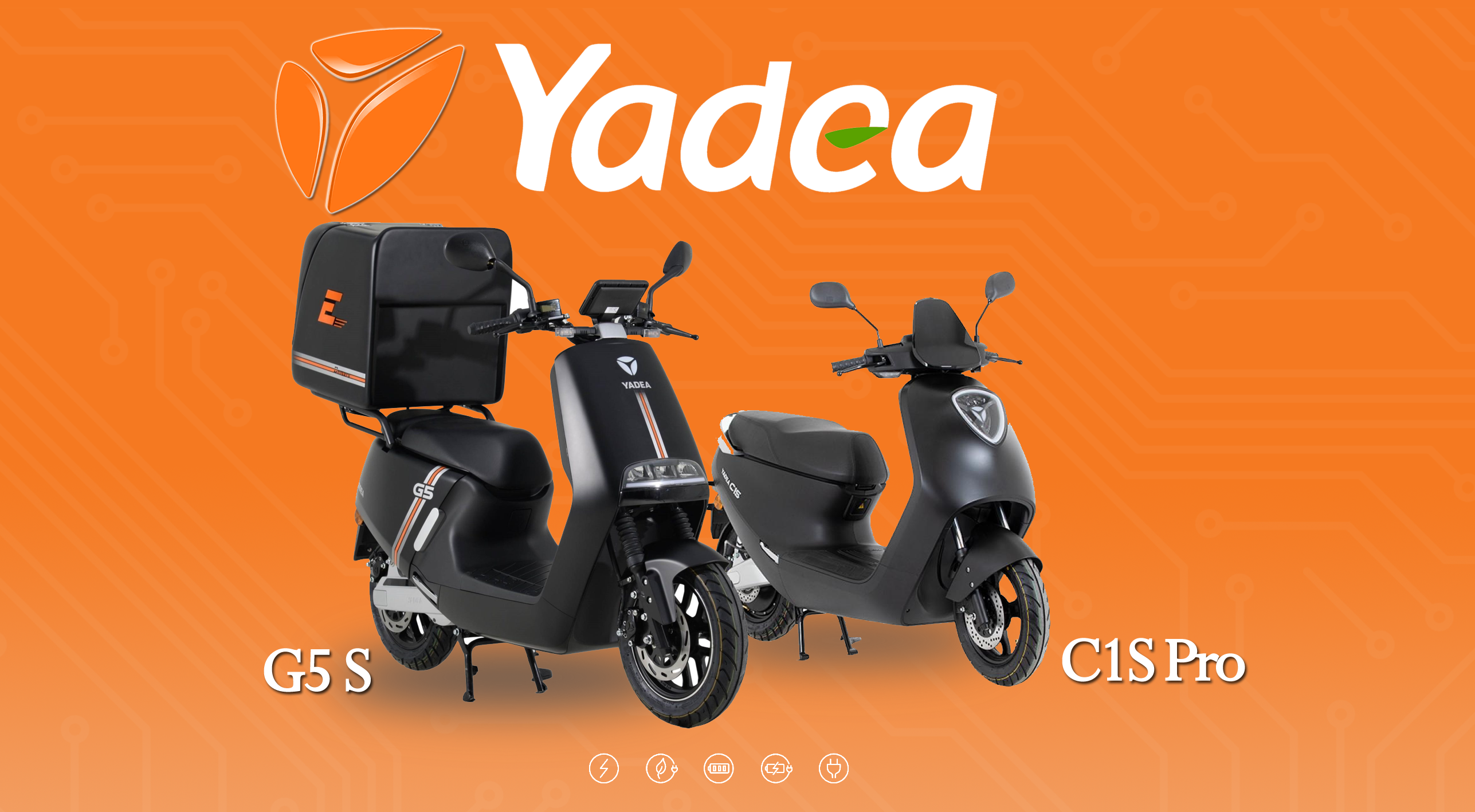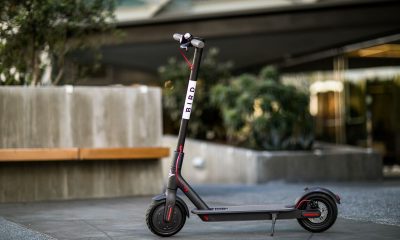Motor Bikes
Yadea C1S Pro and G5 S: two solvent electric scooters in the city that spend less than 1 euro a day
Published
2 years agoon
By
Midhat Zehra
A few months ago we talked for the first time about Yadea ‘s arrival on the Europe market. The Chinese giant has teamed up with Kymco and they have formed Human Mobility, a new parent company that aims to drive mobility as cleanly as possible.
Now we have gone to Zaragoza, the city of the Ebro, to test the brand’s models for the first time in a quick presentation, but which has left us with some interesting points.
From the outset we have that on November 2 the firm is officially launched on the market, with a total of seven models for sale: three mopeds in the L1e category and three L3e scooters grouped around four models and one more scooter for professional use. None exceeds 5,000 euros.
And what does this brand offer us? Well, Yadea comes with a clear approach: to become an essential player in the electric scooter market. For this, it has been associated with top-level names, among which CATL stands out, whom it ‘uses’ to boast that Yadea does not manufacture a single one of the batteries it uses.
CATL is a giant that produces 32.8% of the lithium batteries for electric vehicles in production and ensures a constant supply for Yadea, which in turn is the world’s leading manufacturer of electric two-wheelers since 2017. In 2019 alone, it sold 13.9 million units in more than 88 countries.
The electric scooters that Yadea is going to sell in Europe, use lithium-cobalt-manganese batteries, well configured in cylindrical or soft cell format, but always with the integrated BMS (control unit) because they are all removable.
Yadea G5 S: small and agile
But let’s go to nougat, that’s why we’ve gone on a trip. The first of the Yadea that we have tested has been the Yadea G5 S. It is a concept scooter that we already know, but it is the first time that we have tried it executed by Yadea.
It is a small scooter, simple in appearance but well executed and with more than reasonable equipment. It stands out for having a minimalist shield with a small lighthouse at the bottom, a contained seat and, between the two, a spacious flat floor. Yes, one of those that we hardly ever saw on the market, which is extremely comfortable and seems to be making a comeback.
The rear is just as minimalist and the overall look is modern. Here another well-known name has gotten involved, and that is the design is carried out by the Kiska studio. Does it ring a bell? Nope? Well, they are responsible for the designs of KTM and Husqvarna.
Finishes are acceptable. The touch of the controls is not top but it is not the typical plastic one either. Some finishes have the marks of the moulds, but in general, it is quite well executed. The perception of quality is correct and the bodywork plastics seem well assembled.
When we get on we find a set that feels very light and contained in size, affable and that invites to be dominated by any user with little experience. They are 81 kg in running order.
Ahead rises a 7-inch monochrome screen flown over the handlebar, with large numbers that give a feeling of quality. It lacks some data such as a time clock or thermometer, but we do have the essentials: speed, battery capacity, whistleblowers, mode and mileage.
As we set off, we confirmed suspicions: the G5 S moves very easily and is really pleasant to use in urban traffic. It’s nimble, precise enough, and has a stable feel that we don’t normally find on similarly sized electric scooters we’ve tested.
Part of this good behaviour is due to its mid-engine configuration. This heavy element is placed in the place where the thermal block of the scooter would go and the transmission to the rear wheel is carried out by means of a toothed belt.
It has a power of 4.1 kW and 15.2 Nm of torque, which does not seem like much, but its immediate delivery makes it move quite quickly as long as we do not have the ECO driving mode selected, which it starts by the flaw.
In the most economical mode, the speed is limited to 50 km/h and the delivery is very smooth. Enough for nearby trips but falls short as soon as we take a slightly clear avenue. By changing the mode, the reactions are much more lively and we have plenty of power for everyday trips.
The maximum speed is 80 km/h, and it achieves it quite easily, either from a standstill or in recoveries. The response is lively without being abrupt, although it does have some somewhat dry reactions, especially when touching the brake when the throttle is slightly open. They are not compatible.
The electric motor is powered by two 72V, 20 Ah and 2.88 kWh total capacity batteries with which it achieves a theoretical range of 91 km in Sport mode, according to Yadea. We can remove one battery and leave it charging while we use the scooter with the other. Also with that, we will get some cargo space because the hole under the seat is completely occupied by one of the batteries.
The suspensions are conventional and we have found that they have comfortable behaviour and a good compromise. They are neither soft nor dry, maybe the rear is a bit hard, and they get along well with broken asphalt or cobbled streets.
The front brake for its part could have a little more bite. It is better to use the rear brake, which also performs quite effectively combined braking, although it tends to lock the rear wheel if we press hard. The levers are stiff.
Yadea C1S Pro: personal design with space for a helmet
Then we move on to the Yadea C1S Pro. The most ambitious scooter of the brand, with a distinctive aesthetic and a considerably larger size also launches some interesting proposals.
The aesthetic seems to combine classic winks with modern elements, with a large front shield where a triangular LED headlight is integrated. As in the rear, the Yadea logo lights up inside the headlight.
The engine in this case is located on the left side of the swingarm, acting directly on the wheel axle. In addition, this model is equipped with KERS regenerative braking which, honestly, has not seemed intrusive in its operation.
The power it offers is somewhat higher, with 6 kW, and it is also powered by two 72V, 20 Ah and 2.88 kWh batteries for a top speed of 80 km/h and 92 km of autonomy. We have not been able to test it in this small contact, but Yadea ensures that the batteries are charged from 20% to 80% in three hours. One more to complete 100%. They can be loaded both mounted and at home, but you have to move them by hand. Each one weighs about 8 kg.
The torque is 12 Nm, yes, lower than the previous model, so the touch is somewhat lazier in practice. The operation with respect to the G5 S is very similar. In terms of performance, the C1S Pro accelerates a little faster to stabilize as speed is gained. Probably also conditioned by its greater size and weight. Something that will also have an effect on real autonomy.
Yes, we liked the general feel of the C1S Pro, feeling more refined in general, with better-finished controls, a wider driving position that gives the feeling of being more protected and a hole under the seat where a full-face helmet fits. The power delivery is not abrupt as it can happen in other models. A detail that is appreciated by Yadea in terms of the propeller configuration.
The flat floor is also a hallmark of the model but it is peculiar. It is a little wider, although in return it is a somewhat strange position, with a convex shape and plastic mouldings.
In terms of chassis, the C1S Pro offers a somewhat firmer touch, trying to get closer to the sensations of a scooter in the GT category. There are no great boasts and the components are simple, but the staging is very pleasant at the controls. In the case of the brakes, the same thing happens to us as with the G5 S: we miss a little extra bite on the front brake.
Both models have an alarm and keyless starting system as standard, are very comfortable and seem to have become a must within electric scooters. One thing that the C1S Pro does have is reverse gear, which can help you handle the bike in certain scenarios.
The price of the C1S PRO is 4,890 euros, the most expensive of the entire range, while the G5S costs a little less, 4,190 euros. Two models with many ballots to gain a foothold in our cities.
Doing the math, with declared consumption of 42 and 46 Wh/km for daily use by someone who does 50 km a day, we would get 2.1 and 2.3 kWh per day, which at the current average price of electricity (0.173 kWh) we would stay at 0.36 and 0.39 euros per day.
Added good news is that both models can benefit from the MOVES III Plan, accessing the aid allocated for the L3e category: up to 1,300 euros.
But they are not the only ones who will arrive. Apart from these two, there are also the G5 Pro (like the G5 S but less ambitious in terms of performance, the T9L Plus which is the most aesthetically attractive and the Y1S and Y1S Pro as the commitment to delivery for professionals.
With all this, Yadea is positioned as an important player on the Europe stage now that mobility points directly to electricity. We will see how both the autonomies of these vehicles and the necessary infrastructure evolve, but for now, it is nice to see how better-executed products are arriving and that can be a real alternative for those who need an urban scooter and with little expense.



